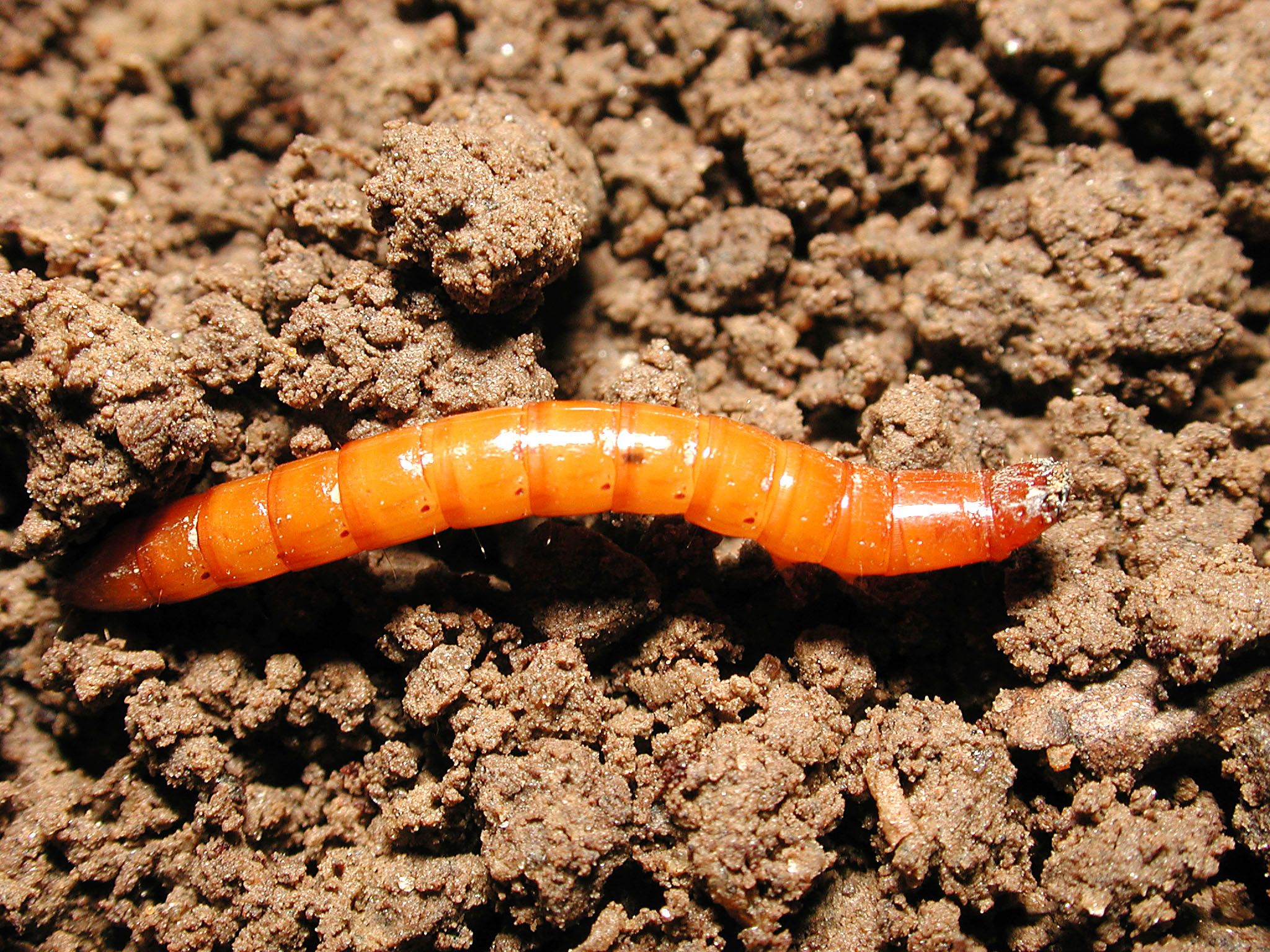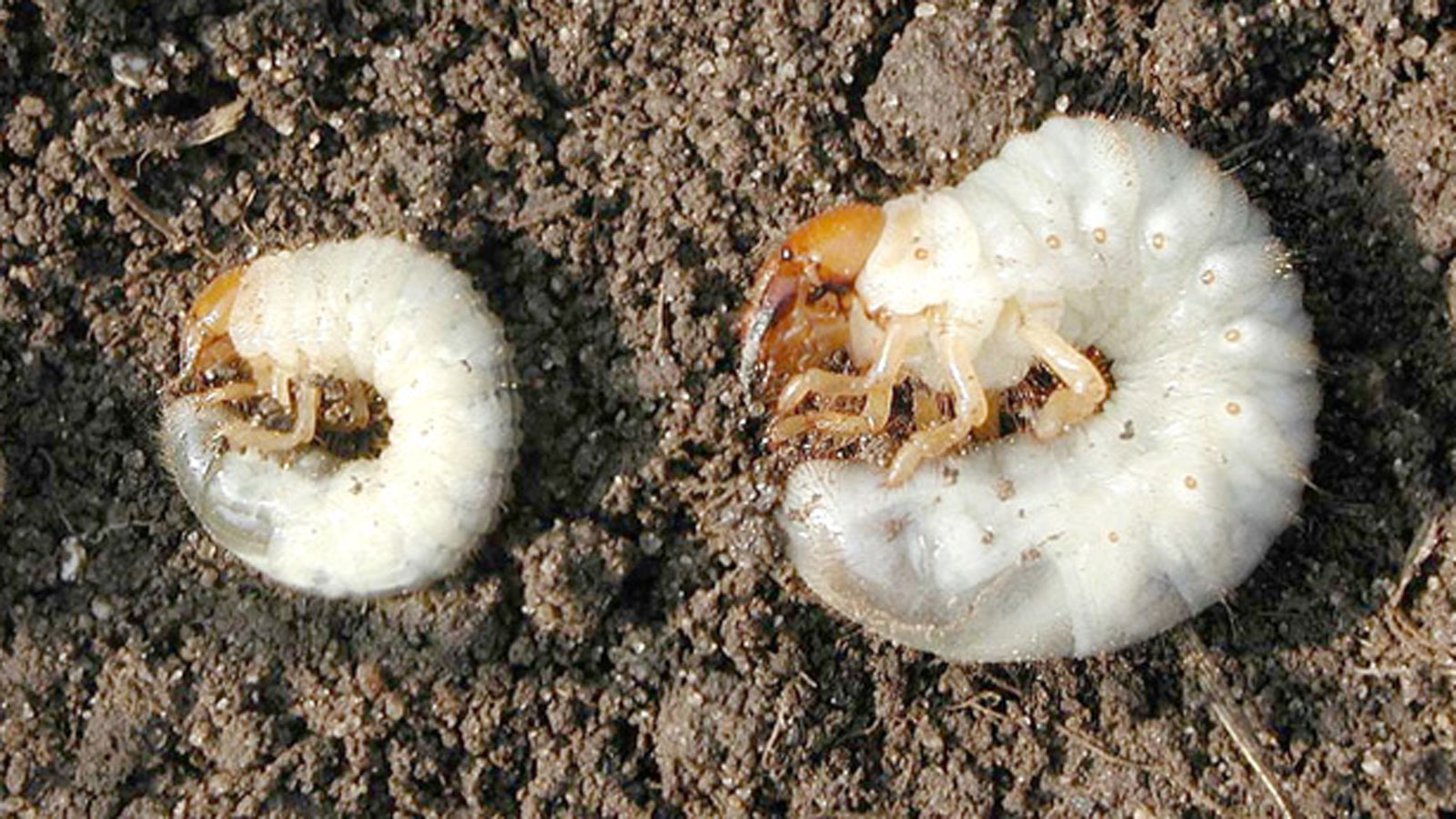Wireworms and White Grubs
Wireworms (Elateridae) and White Grubs (Phyllophaga spp.)

Typical wireworm larva.

White grubs.
Wireworms are hard-shelled, smooth, cylindrical, yellowish worms that are the larvae of click beetles. They are attracted to the smell of germinating seeds and will follow a drill row, resulting in long gaps in the row. They will also burrow into the underground part of seedling stems, often killing the plant. Several species occur in Kansas, the larvae requiring anywhere from two to six years to complete development. Damage in row crops is generally highest during the first or second year after a sod or forage crop was last grown. Problems are worse in loose or sandy soils.
Watch for these insects if the field is tilled before planting, as large numbers may indicate potential problems. Insecticidal seed treatments and planting-time insecticide applications will generally aid in suppression of wireworms.
White grubs are white, C-shaped worms with three pairs of legs, a noticeable tan to brown head, and a dark, subsurface zone near the rear of the body. They are the larvae of June beetles, of which there are at least 20 species present in Kansas. White grubs may be cause for concern in the same rotations where wireworms are problematic. Planting-time insecticides applied in-furrow and commercially applied seed treatments will help suppress both wireworms and grubs.
Please refer to the most recent version of the Corn Insect Management Guide for treatment options.
Page last updated 3/28/2024 by J.P. Michaud.